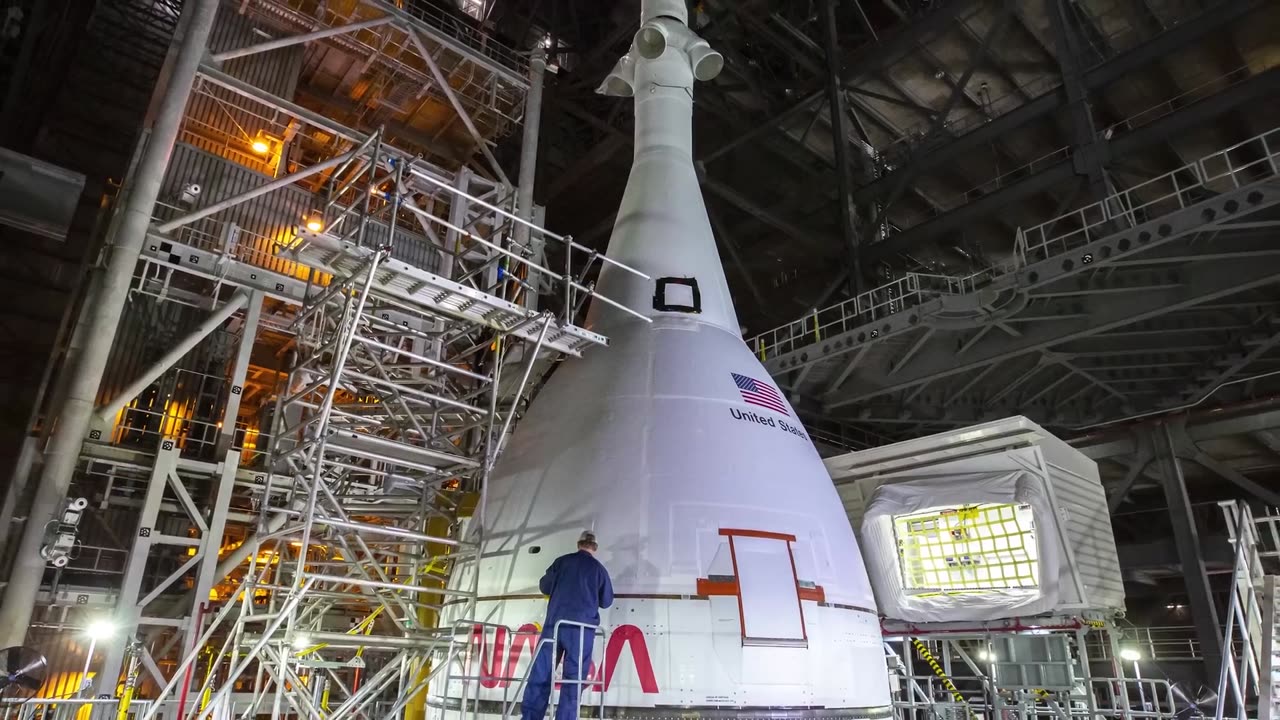Premium Only Content

Artemis I Path to the Pad- The Rocket
As of my last update in September 2021, "Artemis I" was a planned mission by NASA, part of the broader Artemis program, which aimed to return humans to the Moon and eventually send astronauts to Mars. Please note that mission plans and details may have evolved since then, so I recommend checking with official NASA sources or the latest news for the most up-to-date information.
"Artemis I" was intended to be an uncrewed test flight that would pave the way for future human missions. It would use the Space Launch System (SLS), which is a powerful new rocket designed by NASA for deep space exploration. The SLS would carry the Orion spacecraft, which would be the spacecraft used for crewed missions to the Moon and beyond.
The path to the launch pad for "Artemis I" would involve several stages, including:
Vehicle Assembly: The various components of the SLS and Orion spacecraft would be manufactured and assembled at different facilities. The completed rocket stages and spacecraft would then be transported to the launch site.
Integration: At the launch site (most likely NASA's Kennedy Space Center in Florida), the individual rocket stages and spacecraft would be integrated, stacked on top of each other, and checked for proper connections and functionality.
Testing: Before the actual launch, the fully integrated stack would undergo a series of tests to ensure everything works as expected. These tests might include functional checks, electrical tests, and simulated countdown exercises.
Rollout to the Pad: Once all tests are successfully completed, the fully assembled and tested SLS/Orion stack would be transported from the integration facility to the launch pad. This transfer is often done using specialized crawler-transporters.
Final Preparations: At the launch pad, the rocket would undergo final preparations for launch, including fueling with propellants and configuring the payload fairings.
Launch: After all systems are verified, and weather conditions are favorable, the rocket would be ready for liftoff. "Artemis I" would then launch from the pad and begin its mission.
Given the complexity of space missions, unexpected delays or adjustments in the timeline are not uncommon. Therefore, it is essential to refer to NASA's official updates for the latest information on the "Artemis I" mission, including the specific path to the launch pad and the status of the mission.
-
 36:04
36:04
Forrest Galante
16 hours agoPrivate Tour of an Indian Billionaire’s Secret Wildlife Rescue Center
71.4K12 -
 9:37
9:37
Space Ice
1 day agoMorbius Is The Perfect Movie, Everyone Just Lied To You - Best Movie Ever
68.8K27 -
 17:09
17:09
Guns & Gadgets 2nd Amendment News
1 day agoWhy I Left The USCCA
41.5K37 -
 21:33
21:33
Degenerate Jay
2 days ago $2.50 earnedThe Best Video Game Movie Ever Made? Sonic The Hedgehog 3 Movie Review
44.3K -
 19:57
19:57
BlackDiamondGunsandGear
4 days agoIS 22LR ENOUGH?
72.5K25 -
 1:59:47
1:59:47
Anthony Rogers
22 hours agoLIVE Comedy @ Cusumano's Pizza (Upstairs)
48.3K2 -
 5:02:46
5:02:46
MoFio23!
20 hours agoNintendo Switch It UP Saturdays with The Fellas: LIVE - Episode #1
123K15 -
 4:26:49
4:26:49
BLoobsGaming
20 hours agoCan I get an Enhance Crystal Weapon Seed please!? MORE Corrupted Gauntlet
166K42 -
 7:35:05
7:35:05
BSparksGaming
1 day agoDynamic Duo! Marvel Rivals w/ Chili XDD
107K1 -
 7:00:42
7:00:42
NellieBean
22 hours ago🔴 LIVE - trying some COD maybe Pals later
102K1